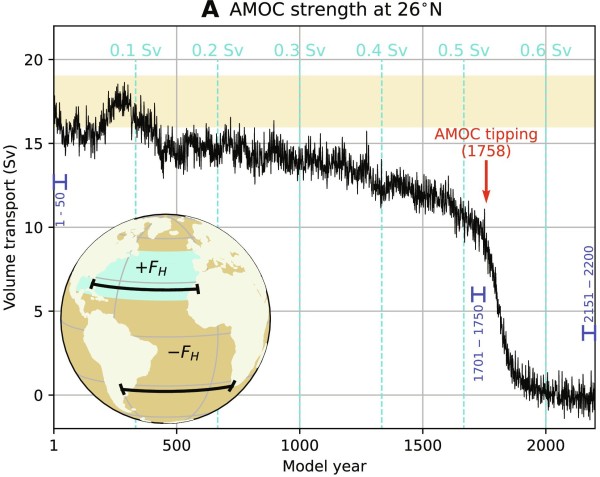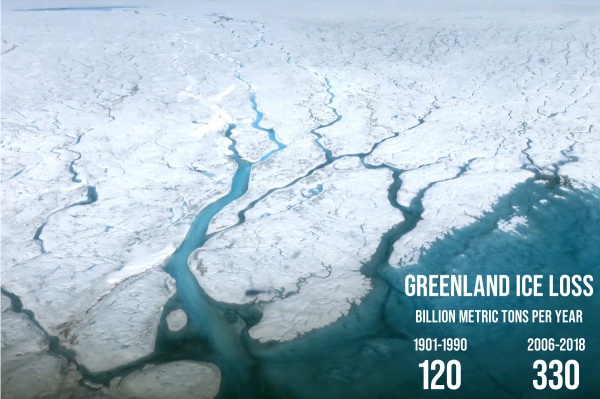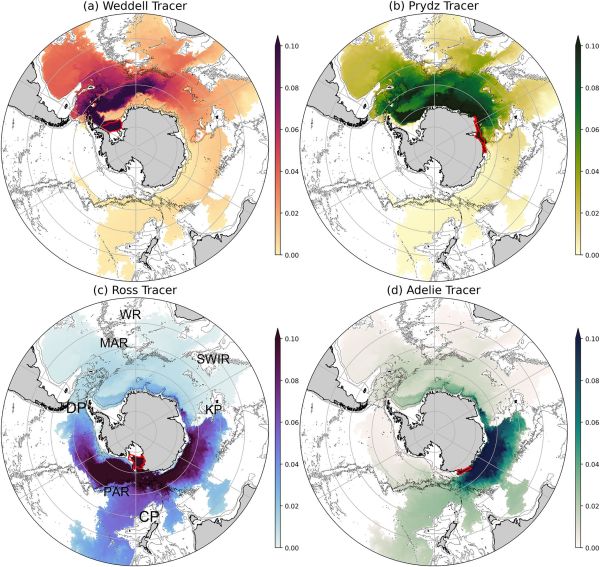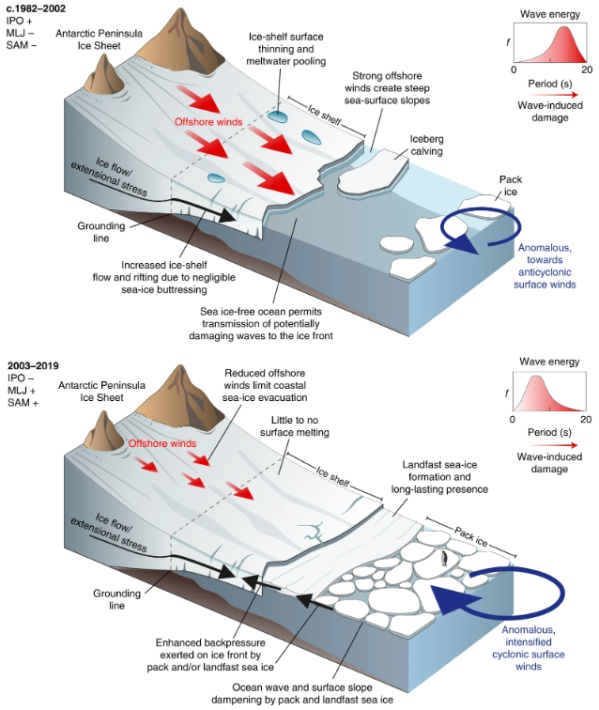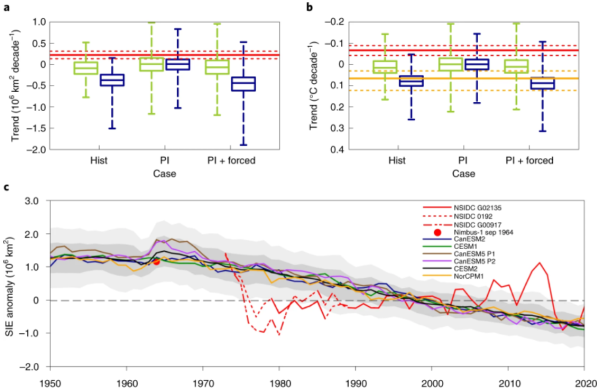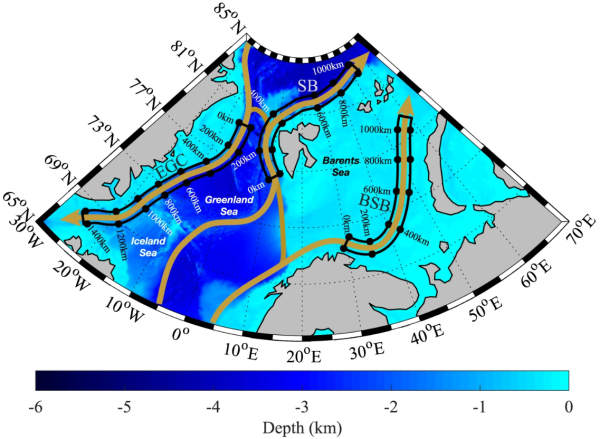The Atlantic Meridional Overturning Circulation (AMOC) transports warm and salty upper ocean water to the subpolar North Atlantic where the upper ocean releases some heat to the atmosphere. Due to the surface cooling and the high salinity (i.e., salty), the upper ocean water becomes heavier and thus sinks down to the deep ocean and then... Continue Reading →
How did excessive Labrador Sea convection in the 1990s increase the AMOC?
The Overturning in the Subpolar North Atlantic Program (OSNAP) observing system, which was launched in the summer of 2014 comprises an integrated coast-to-coast array of two sections: OSNAP West, extending from the southeastern Labrador shelf to the southwestern tip of Greenland, and OSNAP East, extending from the southeastern tip of Greenland to the Scottish shelf.... Continue Reading →
Is the AMOC shutting down soon?
The Atlantic Meridional Overturning Circulation (AMOC) is the Atlantic component of the global ocean conveyor belt, which is a large-scale ocean circulation system that connects the Arctic, Atlantic, Indian, and Pacific Oceans via the Southern Ocean. Predominantly driven by deep convection in the high-latitude North Atlantic Ocean, the AMOC carries heat, salt, carbon, and other... Continue Reading →
Atlantic deep water is now warm enough to melt previously stable Greenland glacier
Ice sheet melting from Greenland's glaciers accounts for an increasing proportion of global sea level rise, losing ~330 billion tonnes of ice per year during 2006-2018 (compared to ~120 billion tonnes of ice per year during 1901-1990). A new study published in Nature Communications examined recent changes at K.I.V Steenstrups Nordre Bræ (66.53°N, 34.57°W), a... Continue Reading →
The Global Ocean Conveyor Belt is Reshaping from the Southern Ocean
As the surface ocean warms and polar ice sheets melt due to increasing anthropogenic greenhouse gases in the atmosphere, near-surface stratification is increasing almost everywhere, including the major deep water formation regions in the high-latitude North Atlantic and around Antarctica. As a result, the global Meridional Overturning Circulation (MOC), also known as the global ocean... Continue Reading →
Antarctic Bottom Water (AABW) export pathways across the Southern Ocean
The Antarctic Bottom Water (AABW) is the densest water mass of the global ocean that covers about 30 ~ 40% of the global ocean volume with temperatures ranging from -0.8 to 2°C and salinities from 34.6 to 34.7 psu. It forms around Antarctica and spreads into the Southern Ocean and then into the Atlantic, Indian,... Continue Reading →
Nearshore sea ice shield Antarctic ice shelves from the damaging impact of ocean waves
The Larsen ice shelves extend along the east coast of the Antarctic Peninsula over the northwest part of the Weddell Sea. From north to south, these segments are called the Larsen A, B, C, and D, bordered by Filchner–Ronne Ice Shelf south of the Weddell Sea. In 1995, the Larsen A ice shelf completely disintegrated,... Continue Reading →
North Atlantic zonal winds will shift northward and become more extreme in the future
The warming response of the upper atmosphere is much stronger in the tropics due to higher water vapor content and frequent deep tropical convection that maintains the atmosphere column well-mixed. As a result, the zonal jet strength, which is largely proportional to the meridional gradient of atmosphere temperature via "thermal wind relationship" is projected to... Continue Reading →
Why climate models are unable to reproduce the observed Antarctic sea-ice expansion
Antarctic sea-ice has expanded over the period of continuous satellite monitoring, which seemingly contradicts ongoing global warming resulting from increasing concentrations of greenhouse gases. A variety of hypotheses have been proposed to explain the observed Antarctic sea-ice expansion and corresponding model–observation discrepancy, but the issue remains unresolved. In a new study published in Nature Climate... Continue Reading →
Sea-ice retreat may invigorate the weakening Atlantic Meridional Overturning Circulation
Due to rapidly rising air temperature over the Arctic and subarctic regions, the ocean-to-air turbulent (i.e., sensible and latent) heat flux over the Greenland, Iceland, and Norwegian Seas (GINS) has diminished (i.e., less cooling of the surface ocean) steadily during the satellite period (i.e., since the 1970s). This may lead to a reduction of deep... Continue Reading →

